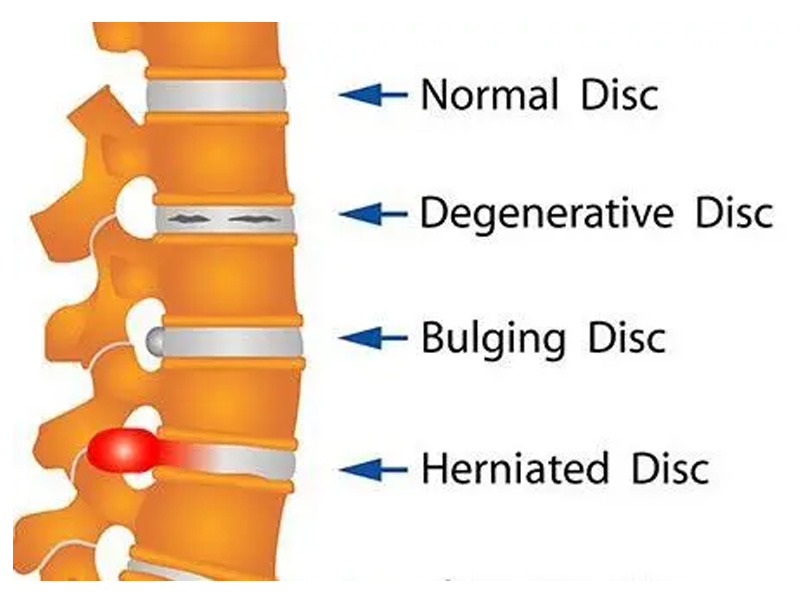Bulging Disc vs Herniated Disc on MRI
To many people even some doctors, the difference in term bulging disc vs herniated disc is minimal but it is 2 different terms which can be misunderstood in the diagnosis process. Many people are very upset when they are in bad pain and get an MRI and results come back with bulging or herniated disc. Most doctors are quick to judge a patients condition based the findings on an MRI. MRI technology is amazing and reveals incredible anatomy with a non invasive test but it has many limitations. Studies have been done comparing groups of people suffering from spinal conditions as compared to people with no known spinal condition. The results of the studies show that MRI will show negative findings in both groups, cautioning Doctors to make clinical judgments about MRI results. It is important to match the patients symptoms to what is found on the MRI. A perfect example I see in practice is when an MRI shows nerve compression at a level of the spine that correlates with symptoms except the bulge is on the other side of the spine from the nerve pain the patient has. This tells me that what I see on the MRI is not the problem the patient is suffering from. Common MRI findings of the spine are Disc Bulge, Disc Herniation, and Disk Degeneration. Understanding the difference of a bulging disc vs herniated disc on MRI puts many patients ate ease once they fully understand.
Disc Bulge
Disc bulging is very common to find at levels of the spine with no symptoms. Our disc is a cushion that over time starts to wear out. As the disc wears out it compresses and we start to see minor bulging of borders. A great analogy is like a car tire that is losing air. Rarely do these create serious issues and are noted on an MRI just to observe the area.
Disc Herniation
Disc herniation is a more serious issue with the disc structure. Our discs are basically made of a jelly like center with an outer ring of ligamentous material. A disc herniation is when the outer layers start to tear and the jelly center starts to protrude out. This is much more likely to affect the nerves because they are usually larger than a bulge and will also cause inflammation in the area of the injury. These can be caused by a traumatic event or by excessive wear and tear, the bulge may have been the precursor to a herniation. Herniation's can cause pain in the area they occur or not even be felt. Herniation's can cause nerve compression if they are in proximity to a nerve or the spinal cord. If nerve compression is caused the patient will exhibit pain, numbness, and even weakness in the extremity innervated by the nerve. If spinal cord compression occurs it can be very serious and cause many parts of the body below the herniation to be affected. Herniation's affecting a nerve only can be treated with conservative care such as physical therapy or chiropractic. Spinal cord compressions are very serious and usually require surgical intervention before permanent impairment occurs. Again note that a bulging disc vs herniated disc on MRI reports is not the only factor in assessing urgency for surgical intervention. Location of the disc herniation is very important. If the herniation is not hitting the spinal cord or a spinal nerve it is less likely to cause nerve damage.
Degenerative Disc Disease
Degenerative spinal joint disease and degenerative disc disease are a process that begins in the middle 30's. It is very common to find on Xray or MRI. The good news it is rarely serious enough to be affecting the spine. Degeneration of the spine is a process of breakdown and fusion. As the spine ages it becomes less mobile if we do not stretch it regularly the vertebra get closer together as the disc spaces narrow. As the vertebra get closer together they begin to fuse. During this process the openings called canals also start to become more narrow due to loss of disc height and joint surfaces enlarging as part of the degenerative changes. When the canals get to narrow the nerves may become compressed and create symptoms in the extremities. As the joints become arthritic they get inflamed causing local pain and stiffness. The good news is most of these changes have to be advanced to cause symptoms, usually not creating problems until we are in our 60's. In some cases due to genetic issues people may have degenerative complaints at a younger ages but this is uncommon.
Regular Chiropractic Care along with healthy lifestyle changes can slow the process of degenerative spinal disease. Regular spinal manipulations keep the spine mobile and maintains proper alignment on the discs reducing uneven wearing. Lifestyle plays a role also, keeping a healthy weight reduces stress on the joints. Regular exercise strengthens the spinal muscles and also reinforces mobility to the spine. Stretching keeps the spine mobile and lengthens the muscles decreasing stress on the spine.
